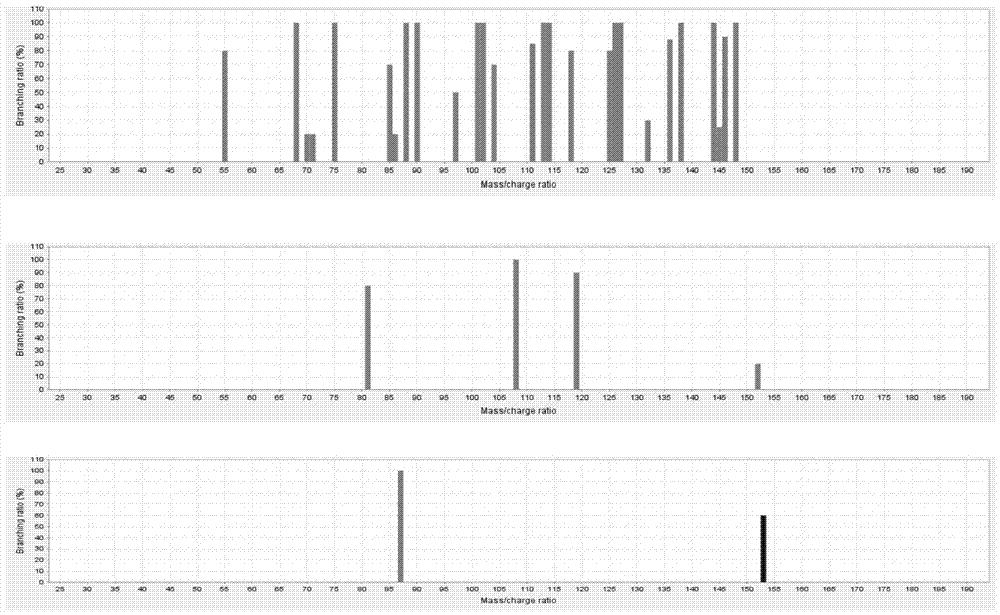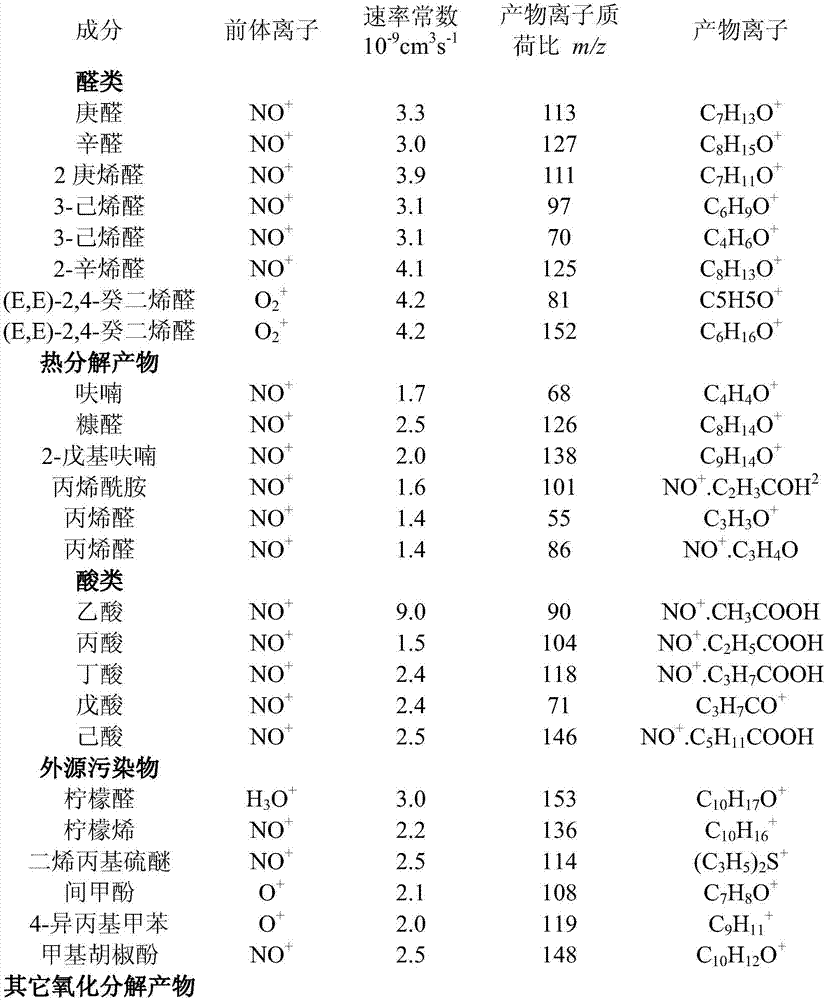A Method for Identification of Vegetable Oil and Waste Meal Oil Using SIFT/MS
A technology of waste meal and vegetable oil, applied in the direction of measuring device, material analysis by electromagnetic means, instrument, etc., can solve the problem that there is no accurate, fast and convenient method for detecting waste meal oil such as waste oil, etc., and achieve the measurement speed Fast, easy-to-use, high-sensitivity results
- Summary
- Abstract
- Description
- Claims
- Application Information
AI Technical Summary
Problems solved by technology
Method used
Image
Examples
Embodiment 1
[0050] This example studies vegetable oils from different sources (different soybean oil, peanut oil, rapeseed oil, camellia oil, sunflower oil, blended oil (from soybean oil, peanut rapeseed oil as raw materials)), animal offal oil, frying oil, original waste oil Contents of 28 components including thermal decomposition products, exogenous pollutants, and oxidative decomposition products in 86 samples including refined waste oil, etc. The specific methods are as follows:
[0051] Put 5 grams of sample into a 540mL glass bottle, seal it with a rubber seal that can be penetrated by a stainless steel needle, put it in a constant temperature water bath at 65°C and keep it for 60 minutes, and set the determination of reactive ions, detection ions and the used ions according to the requirements in Table 1. Reaction rate constant; the first quadrupole and the second quadrupole stabilization time of SIFT-MS are 25ms and 10ms respectively; microwave power: 50W; air is used as the ion s...
Embodiment 2
[0063] Put 5 grams of unknown oil sample into a 540mL glass bottle, seal it with a rubber seal that can be penetrated by a stainless steel needle, put it in a constant temperature water bath at 65°C and keep it for 60 minutes, set up the reaction ion, detection ion and all The reaction rate constant of ions is adopted; the stabilization time of the first quadrupole and the second quadrupole of SIFT-MS are 25ms and 10ms respectively; microwave power: 50W; air is used as the ion source gas; 3KPa L / s; the gas flow rates of the sample and capillary are 0.45 and 1.3KPa L / s respectively. The scanning time used is 60s; the calculation delay time is 5s; the sampling period is 100ms; the precursor is 25ms; the sample inlet temperature is 120℃; the carrier gas argon pressure is 200KPa; 5Pa.
[0064] When the 1,3-propanediol in the oil sample is 1150ng / mL, the acrolein is 4610ng / mL, but does not contain furfural, 2-pentylfuran, butyric acid, hexanoic acid, limonene, according to Table 2...
Embodiment 3
[0066] Add 5 grams of unknown oil sample into a 540mL glass bottle, seal it with a rubber sealing ring that can be penetrated by a stainless steel needle, put it into a constant temperature water bath at 65°C and keep it for 60 minutes, the measurement method is the same as in Example 1.
[0067] When 1,4-butyrolactone 1100ng / mL, furan 140ng / mL, furfural 120ng / mL, acrylamide 400ng / mL, citral 380ng / mL, methyl piperonol 30ng / mL were detected in the unknown oil sample, 4-isopropyltoluene 3000ng / mL, it can be judged by referring to Table 2 that the oil sample belongs to the waste cooking oil of waste oil, which is consistent with the actual results.
PUM
 Login to View More
Login to View More Abstract
Description
Claims
Application Information
 Login to View More
Login to View More - R&D
- Intellectual Property
- Life Sciences
- Materials
- Tech Scout
- Unparalleled Data Quality
- Higher Quality Content
- 60% Fewer Hallucinations
Browse by: Latest US Patents, China's latest patents, Technical Efficacy Thesaurus, Application Domain, Technology Topic, Popular Technical Reports.
© 2025 PatSnap. All rights reserved.Legal|Privacy policy|Modern Slavery Act Transparency Statement|Sitemap|About US| Contact US: help@patsnap.com



